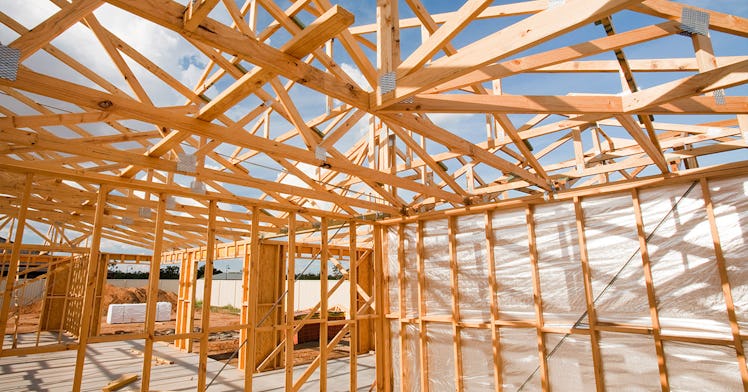One Way to Help Millennials Afford Home Ownership? Build More Houses
The pandemic isn't helping, but it's hardly the entire problem.

The most valuable asset most Americans own, and the one long valorized as a ticket to the stability of middle-class life, is a house. So when there aren’t enough homes on the market, as is the case currently, then an entire generation’s financial future can be threatened.
The supply of U.S. homes for sale dropped near a record low just as millions of members of the largest generation, millennials, enter their prime homebuying years. New research from Realtor.com reveals that there is a 5.24 million home deficit, an increase of 1.4 million from the 2019 gap of 3.84 million.
A big part of the problem is sluggish new home construction. COVID-19 exacerbated an existing labor construction shortage, caused supply chain disruptions that made building materials harder and far more expensive to obtain and increased the demand for housing all at a time when families were making massive decisions about how they wanted to live their lives and where they want to live.
But to blame the pandemic alone would ignore preexisting deficiencies in the U.S. housing market. There’s long been a crisis in safe and affordable housing for most Americans, and federal investment in affordable housing is just not where it needs to be. That’s why people like Senator Elizabeth Warren have talked about repealing the Faircloth Amendment, a rule created in the 1990s’ that states that for every new federal unit that gets built, one has to be taken off of the market. Because of that, there’s been no meaningful increase in the federal housing supply for thirty years.
“The pandemic has certainly exacerbated the U.S. housing shortage, but data shows household formations outpaced new construction long before Covid. Put simply, new construction supply hasn’t been meeting demand over the last five years,” Realtor.com chief economist Danielle Hale told CNBC. “Millennials, many of whom are now in their 30s and even 40s, have debunked the industry’s ‘renter generation’ expectations.”
The dearth of new construction is pushing prices for new and existing homes up at a record pace. And builders facing increased labor and material costs are building fewer affordable homes—32 percent of builder sales in the first half of the year were of homes with a median value of $300,000, down from 43 percent in the first half of 2018.
For its part, the Biden administration appears ready to take action. Deputy Secretary of the Treasury Wally Adeyemo wrote in a Medium post in June that the administration would pursue a slate of supply-side interventions—incentivizing removal of local zoning policies and tax credits to build affordable housing for buyers and renters—that is a departure from past policies like the mortgage interest deduction that focused almost entirely on demand.
More recently, the administration announced more immediate steps it would be taking to “create, preserve, and sell…nearly 100,000 additional affordable homes for homeowners and renters over the next three years.”
How effective these interventions will depend on lots of factors, including where new housing is ultimately built. If the housing market continues on its current path, homeownership is likely to continue to drop, putting the kind of middle-class life enjoyed by many of their parents even further out of millennials‘ reach.